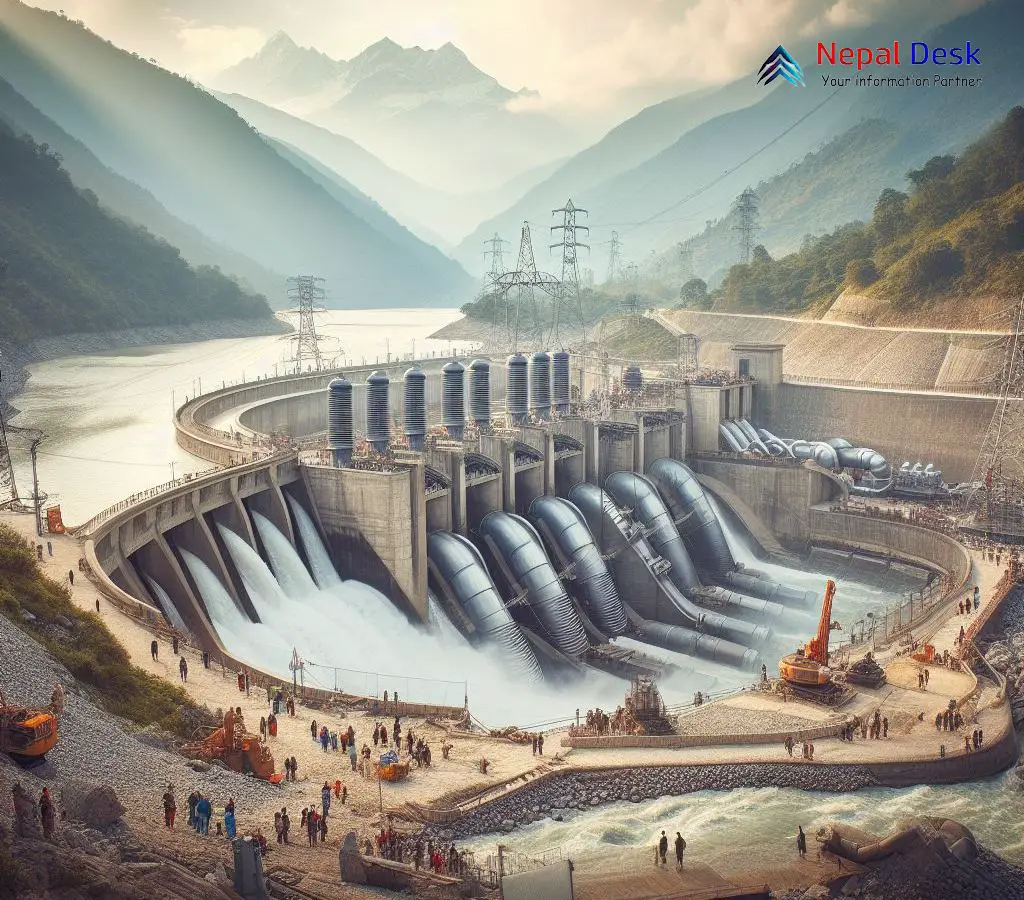World Bank Investment in Upper Arun Hydroelectric Project
Published Date

Published Date
World Bank investing in Nepal's 1,061MW Upper Arun Hydroelectric Project (UAHP), boosting renewable energy, international interest, local economy & employment.
⏱ 3 min read
In a noteworthy development, the World Bank and other international financial institutions are set to invest around $1 billion in Nepal's 1,061MW Upper Arun Hydroelectric Project, signaling the World Bank's return to the country's hydropower sector. The project, initially put on hold in 1995, is now receiving a green light from the World Bank to offer concessional loans valued at 130 billion Nepalese Rupees. The project's location is within Bhotekhola Rural Municipality of Sankhuwasabha district, on the upper reaches of the Arun River.
The Upper Arun Hydroelectric Project is undertaking its Detailed Engineering Design and Environmental and Social Study (UAHEP & IKHPP) with the financial support of the World Bank under Power Sector Reform and Sustainable Development Hydropower Projects (PSRSHDP). This investment will potentially attract more international investors to Nepal, contributing to the nation's target of generating 30,000 MW capacity by 2035.
Although the World Bank previously put this project on hold more than two decades ago, it now has renewed interest in financially supporting it. This involvement will likely enhance the project's credibility and draw attention from additional international investors. Funded through a 70:30 debt-to-equity ratio, the project aims to reach financial closure by May next year. It is set to increase renewable and sustainable electricity supply as well as promote regional electricity trade.
Seen as a game-changer in Nepal’s energy sector, the Upper Arun Hydroelectric Project will fulfill growing domestic demand while allowing for excess power exportation. Aimed at boosting renewable electricity supplies and reducing dependence on imported electricity or fossil fuels, it will generate 1,061 MW of power to accommodate Nepal's increasing energy requirements. It will also create job opportunities for local residents.
The Upper Arun Hydro Electric Project is a Run-of-River type initiative conceived by the Upper Arun Hydroelectric Limited (UAHEL), a subsidiary company of NEA. With a 6-hour peak, it generates an optimized capacity of 1,061 MW. The Government of Nepal regards UAHEP as a Game Changer Project (GCP) among hydroelectric projects due to its low cost of generation and vast firm energy availability.
Located on the upper Arun River stretch, the Upper Arun Hydroelectric Project (UAHEP) is considered one of the Eastern Development Region of Nepal's most appealing projects. Founded in Sankhuwasabha District approximately 200 km east of Kathmandu, the dam is situated within a narrow gorge around 350m upstream of Chepuwa Khola near Chepuwa village, whereas the powerhouse is located near Arun River's confluence with Leksuwa Khola at Chhongryang.
The project's Feasibility Study was initially conducted in 1991 by Morrison Knudsen Corporation in partnership with Lahmeyer International, Tokyo Electric Power Services Co., and NEPECON on behalf of NEA. A revised study took place in 2011 by NEA itself, with the feasibility report ultimately approved in June 2021.
The project will be connected to the Koshi Highway currently under construction by the Government of Nepal. An access road with a total length of 24 km will be built along the Arun River's left bank to reach the Headworks site, including a 1.7 km long road tunnel. The power generated from UAHEP will be integrated into the national grid through a 6 km long, double-circuit transmission line feeding into a 400 KV substation situated at Haitar Sankhuwasabha. The transmission line will have a total length of 5.79 KM.
